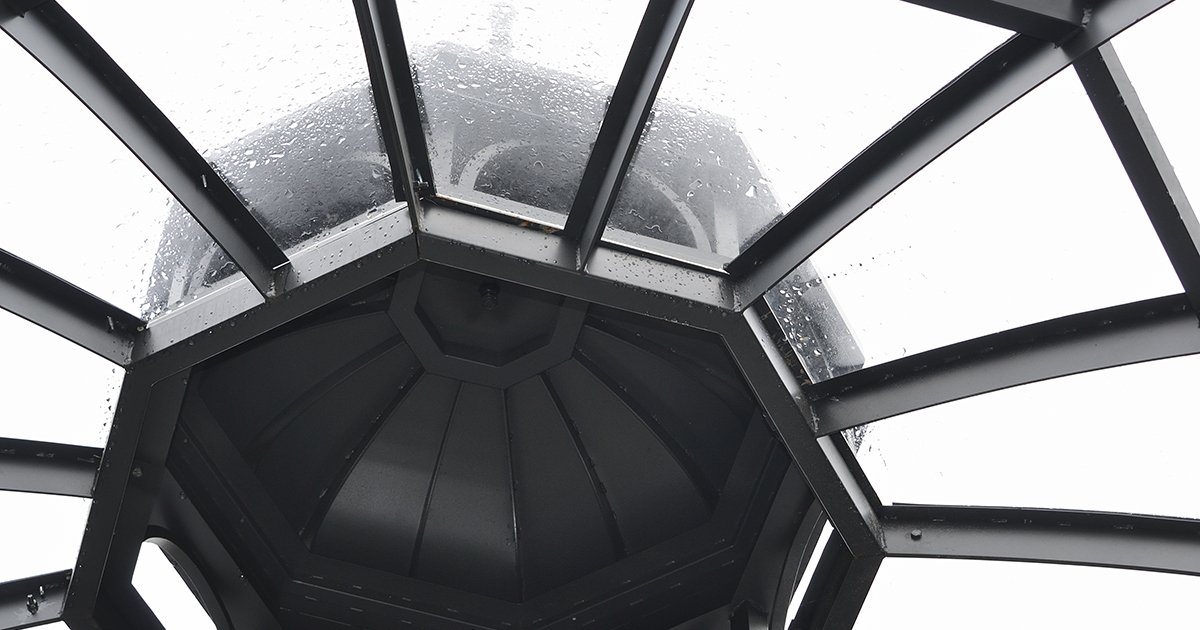Wind/rain monitor for SHEV or ventilation systems
Wind and rain detector or rain detector only
In principle, the first thing you need to be clear about is whether you need a wind and rain detector or "only" a rain detector.
Roof-mounted skylight domes or strips in particular are sensitive to wind gusts or storms and should be closed during storms - if only for warranty reasons. It is best to ask your window manufacturer or skylight dome manufacturer at what wind speed everything must be closed. Most manufacturers have specifications here.
Connecting wind/rain detectors to SHEV control panels
In principle, every manufacturer of SHEV control panels offers a connection option for a weather detector. However, the mode of operation is divided into two groups: Connection of a potential-free contact or connection of the sensors directly to the control panel.
Connection of a potential-free contact
This is the most universal option. It gives you a lot of freedom in choosing the weather detector. Basically, you can connect any wind/rain detector that provides a potential-free contact and closes the contact in case of wind and/or rain. Of course, this presupposes that the evaluation electronics of the sensors take place outside the SHEV control panel. Here there are detectors with integrated electronics or external evaluation devices to which the sensors are connected and which in turn bring the signal (contact) to the SHEV control center.
The evaluation electronics or the sensors are usually supplied via a separate power supply - usually 230V. You have to consider this when laying the cables.
Settings such as wind speed, rain sensor sensitivity, etc. must be made on the evaluation electronics (separate device or in the sensor).
Sensors connected directly to the control panel
Actually the "nicer" variant. The power supply for the sensors comes from the SHEV control panel, the connection is very simple, because the cable(s) from the sensors are connected directly in the control panel. The wind speed or other settings can also be set directly in the SHEV control panel.
Sometimes you need to buy plug-in cards or modules for the control panel to connect the sensors.
In this case, it is essential to buy the sensors from the same manufacturer of the SHEV system for proper functioning. Especially wind sensors, which output a certain number of pulses per second, must match the electronics here. With exclusively rain sensors this is rather uncritical, because these supply only a relay contact. However, the current consumption of the rain sensor must be taken into account. This is because it is supplied with 24V from the control center and the current consumption must not be too high.
Wind/rain sensors for ventilation systems
As expected, there are of course again two different variants: The wind/rain sensor is connected with its potential-free contacts in the 230V circuit or there is a ventilation control center to which the sensor is connected. However, the latter is rather the exception.
In addition, the number of ventilation groups must be taken into account. A ventilation group refers to one or more drives (max. six) that are operated together with a pushbutton. This means that they always open or close at the same time. So, for example, if you have three different rooms that are to be ventilated independently of each other, you have three ventilation groups.
Please also refer to our blog post "Controlling 230V drives with pushbuttons, time switches, radio, wind/rain sensors, ..."
Wind/rain monitor in the 230V circuit
This is the standard case. For each ventilation group, the wind/rain detector must provide a potential-free changeover contact. You must therefore ensure that the detector itself or the evaluation device to which the sensors are connected supplies the appropriate number of contacts. If you need more ventilation groups than the evaluation unit provides, you can easily multiply the contacts. Either with a contact multiplier (accessory part) or commercially available changeover relays.
Mode of operation
If manual ventilation operation is to be possible by means of the blind pushbuttons - i.e. it is not raining or storming - the supply voltage for the drives is brought to the blind pushbutton via the changeover contact, which then in turn enables operation in the up or down direction.
In case of rain or storm the changeover contact switches over, thus the supply voltage to the pushbutton is interrupted and led via the make contact of the changeover contact directly "around the blind pushbutton" to the supply line of the drive/drives. This closes everything and manual operation is no longer possible due to the lack of voltage. Thus the wind/rain sensor has the higher priority.
Ventilation center with connected sensors
The wiring is done star-shaped from the control center. So from the central ventilation unit to the sensors, to the drives and to the push buttons.
The blind pushbuttons are mostly double rocker pushbuttons, so it is possible to operate both rockers at the same time and thus give a stop command. In addition, the control voltage of the pushbuttons is usually 24V, so that, for example, a "wrongly laid" cable, which is not suitable for 230V, can be used. This can become quite an advantage...
Often ventilation control panels offer additional features, for example the direct connection of a thermostat or a timer.
Our recommendation
You may have noticed that products from different manufacturers are similar. In fact, some products are relabeled and are usually easily interchangeable (assuming appropriate expertise). We offer all sensors and accessories of all manufacturers in our store. Because our recommendation for the selection of wind/rain sensors is quite clear: Stay with the same manufacturer. Only then you can be sure that everything is perfectly matched and the documentation of the SHEV control panel (wiring diagrams, settings, ...) fits.
For the professionals
Most SHEV control panels only expect a potential-free contact. It does not matter from which device this comes. In this case, you can connect any sensor that closes in case of wind or rain. Of course, the sensor or the evaluation unit needs a supply voltage. This can be 230V, but also 24V (DC or AC). In the circuit diagrams of the SHEV control panels, of course, the terminal designations of the manufacturer's own sensors are given. However, this should not prove to be an obstacle.
If you want to retrofit a SHEV control panel with Frahling sensors, which is designed for direct connection of a wind monitor, please be sure to use the sensor of the manufacturer of the SHEV control panel. The sensors differ in terms of pulse frequency but also in the contact itself (reed contact, Hall sensor, ...). With the rain sensor there should be no problems to connect one of another manufacturer. We are not aware of any rain sensor that does not provide a potential-free contact.
The connection diagram of the SHEV control panel will give you all necessary information. In case of doubt: Use the original accessory part.






















































